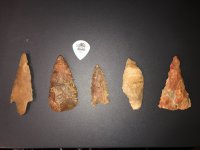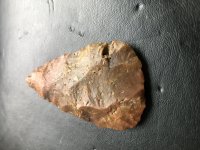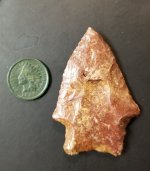Hi everyone,
I’ve had a somewhat decent few months. I’ve switched things up and these have come from 4 different creeks. My main creek has been for sale for nearly a year now so it can go at anytime so I need a backup plan.
The second point from the left has me curious. The reduction flake at the base looks like a flute. Could it be paleo


 u
u
I’ve had a somewhat decent few months. I’ve switched things up and these have come from 4 different creeks. My main creek has been for sale for nearly a year now so it can go at anytime so I need a backup plan.
The second point from the left has me curious. The reduction flake at the base looks like a flute. Could it be paleo



 u
u
Upvote
0




